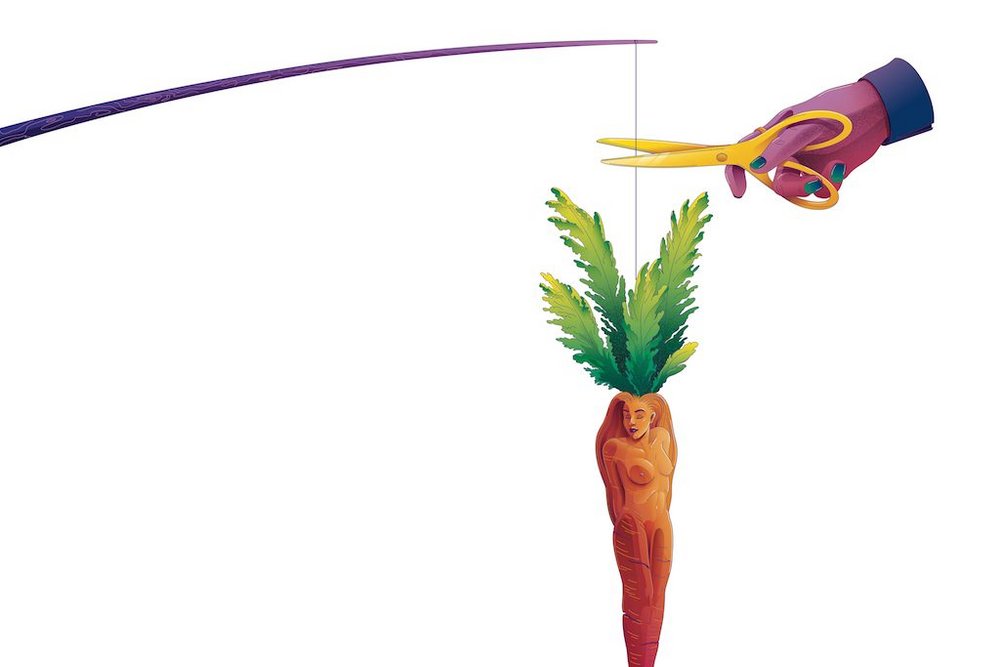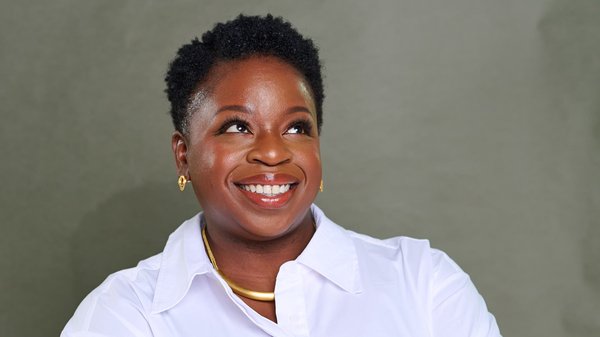Why advertising still fails women /
Brandsplaining authors Jane Cunningham and Philippa Roberts tell Contagious why even in the age of 'fempowerment' marketing is still sexist

If you think misogynistic advertising ended with #MeToo, think again. According to a 2019 study, 66% of women don’t connect with what they are seeing in marketing and 60% say that it has an outdated view of women. It’s a view echoed by Jane Cunningham and Philippa Roberts, former members of the leadership teams at Ogilvy and DDB, London, and now founders of PrettyLittleHead (PLH) – a research company that helps marketers better understand female audiences.
In their new book, Brandsplaining: Why Marketing is (Still) Sexist and How to Fix It, Cunningham and Roberts use case studies and research from around the world to reveal how female experiences, wants and needs are ignored or misrepresented, and so-called ‘femvertising’ simply isn’t a sustainable solution.
The authors also provide 10 principles for marketers to follow if they want to keep up in a world where female lives and attitudes have changed.
We spoke with Cunningham and Roberts to find out why, despite all the progress we think has been made, female representation in advertising is still so wrong. And, more importantly, how to get it right.
What sparked the creation of your female-focused research company?
Philippa Roberts: When we worked in agencies, we realised quite early on that the accounts which were given the energy and status tended to be in masculine categories: cars, beer and tech. When it came to female categories, the briefs were so passing, often formulaic, and always set in the domestic space.
There was a particular inciting incident during a pitch to The Economist where someone suggested that changing the colour to pink would help appeal to women. It wasn’t just that it was put on the table as a good idea, but that when we argued otherwise, there was a lot of pushback – what would we know about it as women? That was the straw that broke the camel’s back.
Jane Cunningham
What is ‘brandsplaining’?
Jane Cunningham: Since the beginning of time, brands have felt that they’re in charge of the relationship that they have with the female customer and that they are in a position to tell women how and what they should be. The story of the book comes in three parts, the first of which looks at how brands used to be explicitly and overtly sexist; we set up the notion of ‘the good girl’ – the attractive, passive, young, thin, white female – and show how marketing essentially gave women an instruction manual of how to behave in a way that is pleasing to men. In the second part, we talk about how people can be forgiven for thinking that things have changed because of #MeToo and ‘fempowerment’ – although in reality, we have barely scratched the surface. The third section of the book lays out what needs to happen to change the way that marketing approaches communicating with female consumers.
What is adland still getting wrong when it comes to talking to women?
Cunningham: When you look at some of the messaging from brands – even those that claim to be empowering – it’s just another version of brandsplaining. Now, instead of telling women to be thinner, more attractive, to have clearer skin and shinier hair, it’s about being braver, stronger, to fix themselves to be better than they are. While it seems like an empowering message, it’s still an example of a brand instructing women about how they should be and how they need to change; it’s sneaky sexism. The overall impact is that women feel they are being criticised by marketing and all it does is have a negative impact on their self-esteem.
Why do you think men are so rarely challenged to change in comparison to women?
Roberts: One of the central stereotypes is that men should not be engaging in any ‘sissy stuff’, which includes emotions, showing vulnerability and putting everything that might be described as sensitive off limits. That is hardwired into the notion of masculinity and it means that change is very difficult for men. That’s why it remains so fixed in a way that it isn’t with femininity, because women have always been told that they need to change; the emphasis is always on women being different.
Cunningham: Gillette is a perfect example of the exception to the rule [with The Best a Man Can Be ad]. The female equivalent of that would be described as ‘fempowering’, whereas the male reaction was that it had to be denied. The problem is that marketing has cemented the notion of what it means to be a man when actually the aspirations they are given are largely unachievable and actually very harmful to men.

The subtitle of the book is ‘Why Marketing is (Still) Sexist and How to Fix It’ – what’s the first step in fixing it?
Cunningham: Understanding what it is women want has to be the first step. It’s important to develop a properly grounded and granular understanding of your audience, as marketing is, essentially, understanding where your audience is coming from. There’s been an obsession over the last five to 10 years with big data which masks some of the more subtle changes that have been happening in women’s lives. The data has often been developed, configured and then reported in a way that doesn’t really allow you to interpret the truth of things. It represents a threat to brands now that women are cantering ahead of them and they have a lot of catching up to do. The only way to do that is by talking to them in an intimate way rather than just measuring their behaviour. That very granular type of research is essential in order to understand the audience as they are changing course.
You argue that part of the problem is brands assuming authority: operating on a higher plane, knowing best, flagging up the need and then positioning itself as the solution. What do brands need to do instead?
Roberts: It’s about projecting and understanding the right aspirations and not conflating aspiration with perfection and male-pleasing ideals.
Cunningham: Our research shows that female aspirations are around being financially independent, to feel comfortable in their own skin, to travel the world. It’s not about the traditional aspirations that a lot of the marketing world suggests, like how women want to make themselves as perfect as possible to the male lens in order to achieve the security of male patronage. Marketing can be aspirational, but it just needs to be aspirational about the hopes that women actually have.
How can a brand detect if its marketing is biased?
Cunningham: Often these biases are unintended, so good, open research is essential. Talk to women about the marketing, ask them what it’s saying about women rather than the product, understand their lives and build that back into the communications rather than shoehorning an idea in. What do they think the people who wrote the ad are like? What do they feel the brand believes about the way that women are, or the way they should be? Then it’s just about being very conscious of the notion of brandsplaining, once you understand the concept it’s pretty easy to see.

What about when it comes to factors such as race and age? How is marketing falling short?
Roberts: The idealised version of a woman was always white; black women were invisible in marketing. More recently, there has been a great effort made to be more inclusive but that often comes across as tokenistic. Very seldom is the black woman the solo star of marketing or advertising, and I think that’s because there’s an underlying sense of otherness about black women. On average, 68% of white women say that they don’t see themselves in marketing and this is even more profoundly felt by women who are black.
Cunningham: Age is profoundly linked to the idea of the good girl because the good girl is always young. And that feeds the notion that female life is believed to be a bell curve where everything prior to marriage and children is an exciting opportunity and then everything afterwards is a terrible decline as you morph into a metaphorical greyness.
There’s true invisibility of older women in marketing. When it does happen, it’s set up as an exception rather than the reality, which is that women over 50 make up 40% of the population – they’re not 10% of the population, which is the representation in advertising. It’s commercially negligent for marketers and advertisers to not consider older women as a central part of any target audience.
So what is being missed when it comes mature women?
Cunningham: We’ve done a lot of research with women who are 50 to 80 years old and they describe the period of their lives once children have left home, etc as one of enlightenment and self-indulgence; they buy what they want, eat what they want, have their home the way they want it. All of the quantitative research we’ve done suggests that older women are bolder, more outspoken and more engaged. While there’s a male lens on marketing, there’s also a youth lens that says age equals bad and that’s completely wrong.
Historically, older women haven’t been part of the creative process. A recent IPA study found that just 6.3% of people who work in advertising are over 50 years old and only half of those are women. The same is true of marketing, where it’s only 6%.
Philippa Roberts
Can brands positively affect change without alienating people?
Cunningham: As a brand, you have to ask yourself what your ideals are and if you want that to play out in your marketing. Are you going to be someone who’s going to encourage the insecurities that have been created around the way women look or are you going to do something different? Yes, there’s a risk, but without risk there’s very seldom a reward.
Over the past decade brands have led initiatives in areas such as girls’ education and positive beauty, but the book notes that brands are strangely quiet when it comes to unequal domestic work (with the exception of P&G-owned Ariel’s Share the Load). Why do you think this is the case?
Roberts: This area really hasn’t been explored. We honestly think that it comes down to the composition of the creative department. It’s so much easier for them to do an ad packed with singing and dancing, that’s bright and breezy positive about cleaning or the home with a few men popping in and out.
Cunningham: But now is exactly the right moment to change this. As a result of the pandemic, unequal domestic responsibilities have never been laid so bare. This issue of division of domestic labour that’s been happening over the pandemic has left women ready for someone to stand up and make that point very loudly and very clearly. So, whoever gets there first will be in a very good position to win some kudos from the female customer.
You flag some companies that have got it right – Dove with its Real Beauty positioning, Unilever and its Unstereotype Alliance – but you also say that even these brands are reaching the end of the road. Why?
Roberts: We love Dove and all the work that it has done. But Dove and the other good branded responses have to be feeding off the construct of the good girl for their oppositional stance to make sense, and the good girl needs to be eradicated now, not pointed out. Secondly, while these brands are standing up for women, they are operating on women’s behalf and women don’t want that anymore. It’s no longer enough for brands to talk about supporting women or executing at a superficial level. The female customers we talk to are finding it increasingly patronising, hypocritical and derivative. It’s time for a new model.

In the book you outline 10 principles that describe a new model for brands to speak to their female audiences. What is the most vital one?
Cunningham: It’s probably the first one, which is about getting rid of the bell curve notion and removing that from your impression of what female life is and how it gets played out. I think as well, it’s about understanding that women now do genuinely please themselves and their aspirations are quite different to the ones that get played out in marketing. Once you’ve rid yourself of that, it’s about finding as much inspiration as possible from the D2C women-owned brands that intuitively know what women want and how they feel.
What is the most important thing that you have taken away from researching and writing the book?
Roberts: We were finishing it during the pandemic and I think we were particularly struck by the negative impact of Covid-19 on women. It showed that brands have been talking a good game about empowering women but not practising what they’ve been preaching. Women have lost their jobs, received pay cuts and taken the brunt of increased domestic labour and childcare responsibilities. The big takeaway for me is that this kind of hypocritical thinking needs to be called out and won’t be sustainable in the world that will emerge post pandemic.
If you had one parting message for brands and marketers, what would it be?
Cunningham: Be very conscious of the concepts that are deeply embedded in your perspective and that, when played out, can be quite harmful. There is a need for reflection and then action; change has to happen and marketing needs to be fixed, but for that to happen the people who are responsible for it need to understand what’s going wrong.
Want more of the same? /
We don’t just write about best-in-class campaigns, interviews and trends. Our Members also receive access to briefings, online training, webinars, live events and much more.







